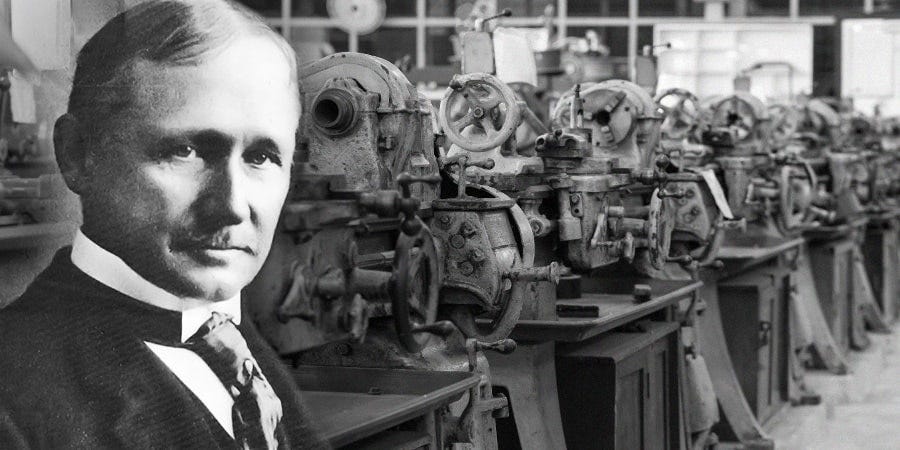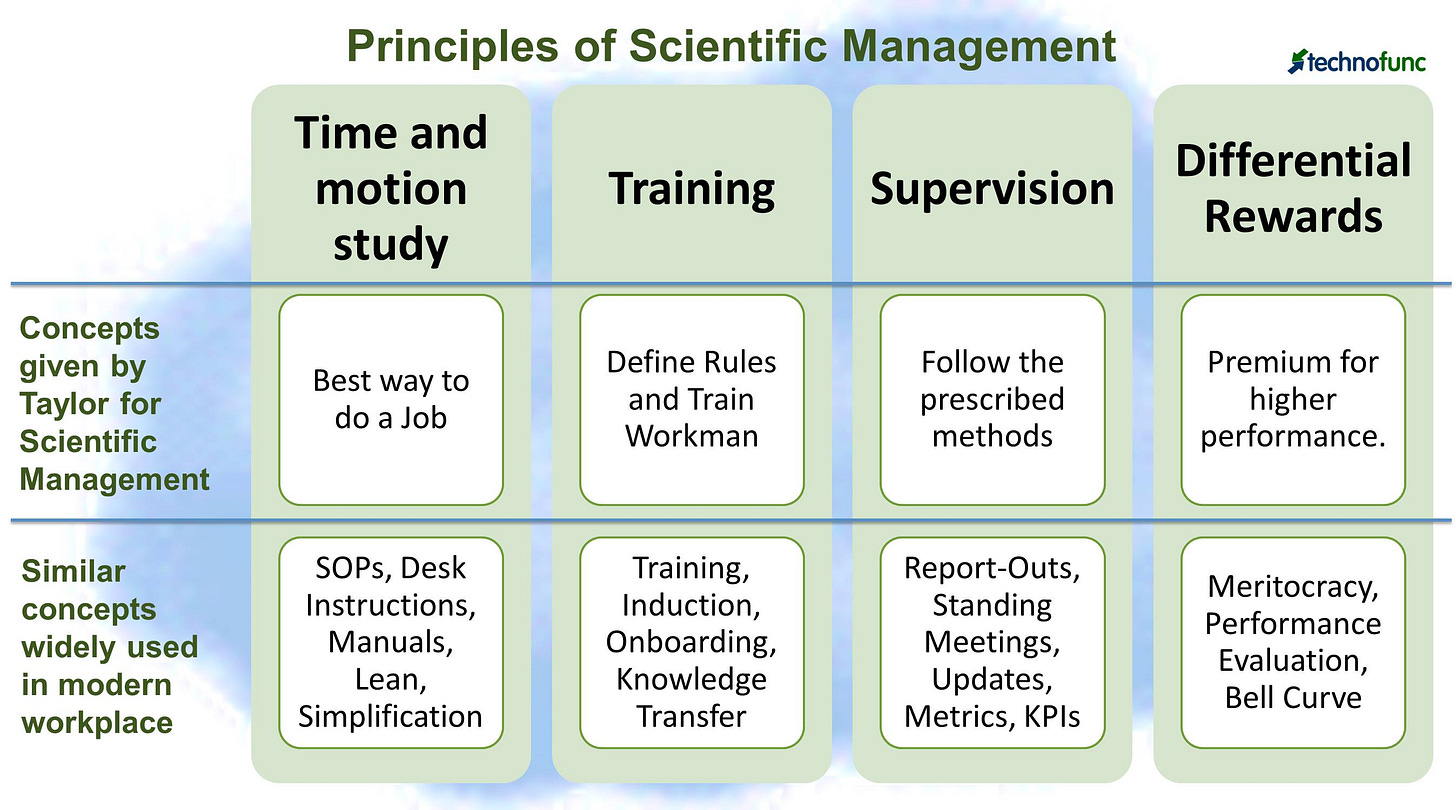As we approach the one-year anniversary of All Things Retail, I have realized a few things:
50+ issues is a lot of writing! But that’s my choice and I enjoy it. Why? >>
I love sharing my 30+ years of retail and CPG knowledge with our readers. What’s even better is hearing back from so many of you that some of my shared content has been used and has helped your grow sales and profits. That’s our core mission!
To that end, I want to continue to find as many ways to continue to provide as much free content as possible. Our paid subscription offering works well and provides great value for those subscribers (which will continue), but I want to flow more free content to everyone. In order to accomplish this, we need to continue to add sponsors and advertisers. Both options are very effective and inexpensive ways to reach about 7,500 retail decision makers. If you know of any businesses that would like to consider paid sponsorships or ads, please share the link below or have them reach out to me at abailen@3PeConsulting.com. They won’t be disappointed and their support will result in more and more free content from All Things Retail. Here’s the link:
Enough about me. Let’s jump into this week’s subjects:
How a focus on time & motion can save you money.
The breakfast of champions and how it helps build stronger teams.
A quick take on sampling.
Thanks again for being a reader and all of your support!
Sponsored Content
Sponsored Content
Time & Motion? Isn’t this an old term related to manufacturing? And who is this guy Frederick Taylor (and what does he have to do with retail)?
Well, if you are believer is studying best practices from any business to determine if and how they might be applied to the retail business, you may want to read on. Why? Because applying some time & motion principals to your business might just help it operate more efficiently and save you money. How is that for a good reason!
We all know that people have been searching for the most efficient ways to work seemingly forever (think way back to the invention of the wheel as an example). Frederick W. Taylor is highly regarded as an (“the”?) expert who “wrote the book” on the subject, both literally and figuratively. He espoused many theories, the most famous of which may be the time & motion study.
The time & motion study can be defined as an evaluation of the physical movements necessary to achieve a particular task and the related time used by each movement. The end goal is to identify wasted time within a task and eliminate it which will drive greater productivity from a team.
So Where Did This All Begin?
This all dates back to the late 1880s, when Frederick Taylor began conducting time studies to determine the duration of particular tasks occurring in specific workplace settings. Taylor wasn’t the first to do this, but he is regarded as the best. As his time study evolved, it became a component of Taylor’s scientific management theory.
Also called the classical theory of management, scientific management focuses on efficiency above everything else. In 1909, Taylor published a book titled "The Principles of Scientific Management" which took the position that companies could boost productivity by simplifying and optimizing tasks. He applied scientific methods like rationality, observation, and analysis to identify the best ways to execute specific activities. Taylor identified four key elements elements of management:
Find the most efficient approach to tasks.
Track how employees carry out their assigned duties.
Match worker competencies with the right jobs.
Leave the planning and training to the management to allow subordinates to work efficiently.
Enter part two, the “motion” study by Frank and Lillian Gilbreth. This motion study analyzed movements and how they could improve work methods. It included several more human-focused variables such as skills, habits, health, temperament, and nutrition. The Gilbreths explained that their motion study looked at the fatigue that workers experienced and worked to identify ways to eliminate it. They recommended solutions like rest-recovery periods, chairs, workbenches, and hiring the right people for the tasks they will perform.
In combination, the implementation of the time & motion study was one of the first times ever that process improvement and process management were treated as a scientific problem.
Thanks for the History Lesson; But How Does this Help Me?
Every single physical task that occurs in a retail setting (or support environment such as offices and distribution centers) requires some type of movement and a related investment in time. If you can reduce the necessary movements, you will reduce the invested time as well, resulting in cost savings. This is exactly why the time & motion study is applicable to all of us even after all of these years!
Analyze your tasks and how your associates complete them. Identify inefficiencies, remove them, and then standardize that new process. Want an example? How about unloading a shipment of product from a truck. How many steps are involved in moving the boxes from the front to the tail of the truck, then off the truck, then into the stockroom, then into a staging area, then being sorted for processing (check-in), them moving to the sales floor or back room storage, etc? If this takes, for example, 10 steps currently, and you can identify a way to eliminate two of those steps, you will have saved about 20% of the time invested in this task. And time = money!
Removing inefficiencies increases the productivity of your team.
Time-motion theory enhances resource planning and allocation.
Standardizing efficient processes reduces performance errors.
Hiring the right people for the right tasks reduces turnover.
All of the above will allow you to drive down your costs of doing business and reallocate resources to more value-added activities.
Where Else Can I apply Time & Motion?
The list is close to endless. Look at your most time-intensive physical tasks first and address them but keep working through the entire list over time. You will be happy with the results. To kick things off, here are a few ideas of where to focus:
Freight unloading and processing
Restocking shelves
Graphics changeovers
Salesfloor display changeovers
Markdown management (signs, shelf labels, etc.)
Daily straightening, cleaning and maintenance
Checkout process and throughput (scanning, payment, bagging)
Customer returns (transaction, save the sale, disposition of returned product)
BOPIS process (product pull, label, storage, pickup)
Task identification, delegation, and follow up
Stick with Fred, it will be worth it!
The Breakfast of Champions
As business people, I would argue that our top priority must always be to attract, develop, retain, and motivate our teams (employees, associates, staff, or whatever term you may use). Short of this, we are effectively handcuffed in terms of being able to serve the consumer and execute company initiatives at a high level.
I have written about this subject before, including one of my most read issues, “10 Ways to Stop the Retail Employee Exodus”. Today I want to share a highly effective team building tactic I have used for years…and it’s…breakfast!
In the retail business, it’s challenging to bring our people together as some are always in the stores performing their job. To address this challenge, as I traveled the country, I used early morning breakfasts in centrally located spots (restaurants, meeting rooms, even stores from time to time) to bring the local teams together. I began this as a district manager (for store managers and assistant managers) and continued using this tactic for over 20 years, up to and including when I was the CEO. My title didn’t matter (although it likely did for attendees), rather communicating with the team mattered.
These team breakfasts were meant to bring multiple store leaders together, build a sense of camaraderie, allow me to communicate with them and listen to their questions and concerns as a group, share some (usually) good food, and have a bit of fun. Here is my model:
Schedule the breakfast ideally 2-3 weeks in advance so the team can plan accordingly. Begin very early to allow time for those staffing stores that day to get to work on time. Keep the meeting to 60-90 minutes.
Choose a location that is relatively easy to get to, will easily fit everybody, and will be quiet enough for effective two-way communication.
Bring in or order breakfast. Order enough so you don’t run out (cheapskate) and don’t scrimp on quality (3 dozen donuts doesn’t cut it unless they are a part of a larger menu). The quality of the offering will reflect the level of importance you apply to this field team.
Plan to have someone shooting pics and/or videos for future use, including a full-team photo.
Greet each attendee personally.
Begin with a short business overview, including recent company performance, the performance of the team you are meeting with, and upcoming initiatives.
Recognize 2-3 attendees for work anniversaries or standout performances (research in advance). Celebration should be a key element of this breakfast.
Open the floor for questions, comments, and concerns. Groups can be quiet so you may want to “seed” the first question in advance to break the ice. Answer each question/comment honestly and thoroughly (even if the answer isn’t necessarily what you think the team wants to hear). If you need to research an answer, say so, and then do so later in the day and reply to the group via email or similar. Do not leave anything hanging.
Begin the wrap-up by covering 2-3 (not 10-12) key priorities you want the team to focus on and ask the group to commit to them. It’s OK to get them to shout out their support as a group.
Thank them, tell them you are proud of them, let them finish eating, and depart on-time (respect their time and do not keep them over the scheduled window as many will need to get to their stores).
Shake hands (of fist/elbow bump) each departee, thank them for attending and for all of their hard work.
It’s easy to run “all hands” meetings in an office environment. It’s not so easy for retail team members in the field, even though it’s equally if not more important. Try out my team breakfast program. I’ll bet you a bagel & coffee that you will love the results!
Quickie About Sample Packs:
We know sampling works (see Costco story above). It’s also pretty clear that other forms of sampling are quite effective. This goes beyond trying a single new item (as Costco does it) to comparing comparing multiple options of a particular type of product. What comes to mind first? This, a classic Beer Flight, a great way to sample various beers and perhaps find a new favorite:
Keep reading with a 7-day free trial
Subscribe to All Things Retail to keep reading this post and get 7 days of free access to the full post archives.









